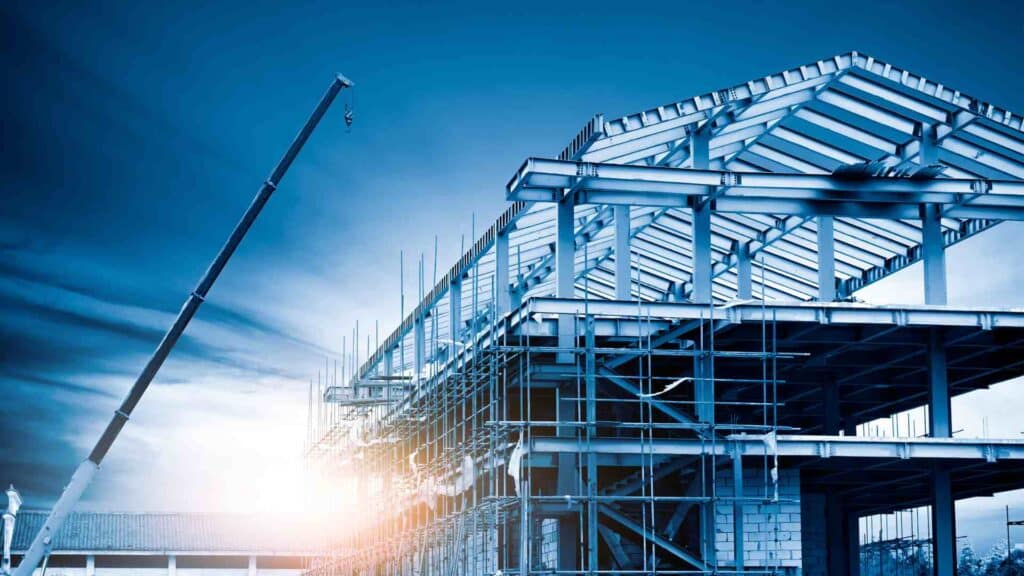With 10 Vital Topics to Explore
Table of Contents
Introduction
In the dynamic world of industry, where innovation and efficiency reign supreme, the role of structural engineering has transcended traditional boundaries. It’s not just about constructing buildings; it’s about creating environments that foster safety, innovation, and sustainable growth. From manufacturing powerhouses to sophisticated warehouses, the realm of structural engineering plays a pivotal role in shaping the industrial landscape. In this article, we delve into the multi-faceted significance of structural engineering in the industrial context. We explore how it ensures safety, enables innovation, complies with regulations, and influences economic and environmental considerations. Join us on a journey that uncovers the intricate art and science of structural engineering and how it propels industries toward a future of excellence.

I. Ensuring Safety and Stability
In the realm of industrial ventures, structural engineering plays a pivotal role in ensuring the safety and stability of facilities. From manufacturing plants to warehouses, the integrity of structures must be meticulously designed to withstand the demands of various operations. This becomes especially critical in industries where heavy machinery, equipment, and materials are in use. Structural engineers meticulously analyze and design the layout to withstand both static and dynamic loads, ensuring that the facilities can operate safely and efficiently.
II. Innovative Design Possibilities
Structural engineering brings innovative design possibilities to industrial projects. Advanced computational tools and simulation technologies allow engineers to experiment with various structural forms, materials, and configurations. This enables industries to create unique and functional spaces that optimize productivity, enhance workflows, and even influence brand identity. For instance, open and efficient layouts can foster collaboration among employees, while sustainable designs align with environmentally conscious practices.

III. Meeting Regulatory Standards
Industries are subject to stringent regulatory standards regarding safety, environmental impact, and structural integrity. Structural engineers are well-versed in these regulations and work closely with industries to ensure full compliance. This involves not only adhering to national and international codes but also adapting designs to local conditions, seismic requirements, and other factors. Meeting these standards not only ensures legal compliance but also safeguards the well-being of employees and the community.
IV. Minimizing Environmental Impact
Sustainability is a central concern for modern industries. Structural engineering can significantly contribute to minimizing the environmental impact of industrial operations. Through careful design choices, efficient material use, and integration of renewable energy solutions, industries can reduce their carbon footprint. A well-designed facility can optimize energy consumption, reduce waste generation, and even incorporate green spaces for a harmonious coexistence with nature.

V. Economic Considerations
Structural engineering in the industrial context goes beyond safety and aesthetics; it also impacts the bottom line. Well-designed structures can lead to efficient space utilization, streamlined workflows, and reduced operational costs. By optimizing layouts and material usage, industries can achieve cost savings over the facility’s lifecycle. This prudent approach aligns with financial objectives while ensuring sustainable growth.
VI. Role in Complex Projects
In the industrial sector, projects often involve complex challenges, such as integrating diverse systems, accommodating heavy machinery, and adhering to specific industry requirements. Structural engineers act as problem solvers, ensuring that the facility’s design addresses these intricate needs. Their expertise in materials, load distribution, and construction methodologies contributes to the successful execution of projects, regardless of their complexity.
VII. Collaboration with Other Disciplines
Structural engineering doesn’t operate in isolation; it collaborates seamlessly with other disciplines. This interdisciplinary approach is crucial in industries where facilities require integrated solutions involving mechanical, electrical, and architectural components. By working in tandem with various experts, structural engineers create cohesive designs that harmonize different aspects, resulting in a functional and harmonious industrial environment.
VIII. Real-World Examples
The impact of structural engineering is evident in real-world examples across industries. Iconic manufacturing plants, warehouses, and distribution centers are testaments to the power of thoughtful design. From optimizing space for efficient operations to creating striking architectural elements, these examples underscore the transformative role that structural engineering can play in enhancing industrial facilities.
IX. Technological Advancements
The realm of structural engineering is continually evolving, driven by technological advancements. Innovative tools like Building Information Modeling (BIM) enable engineers to create accurate digital representations of facilities. This aids in simulating scenarios, optimizing designs, and even predicting maintenance needs. Industries benefit from these advancements, as they lead to streamlined processes, reduced errors, and enhanced project efficiency.
X. The Future of Structural Engineering
As industries continue to evolve, so too will the field of structural engineering. The integration of Artificial Intelligence (AI), advanced materials, and sustainable practices promises exciting possibilities. These developments align with the industrial sector’s growing emphasis on efficiency, sustainability, and innovation. STANCE is poised to be at the forefront of this evolution, offering comprehensive structural engineering solutions that cater to the unique needs of every industry.
In Conclusion
Through a blend of innovative design, adherence to regulations, and commitment to sustainability, STANCE PROJECTS INDIA PVT LTD is primed to revolutionize the industrial landscape. Our team of experienced professionals brings a fresh perspective to every project, leveraging cutting-edge technologies and industry insights to deliver premium structural engineering solutions. While our journey is marked by new beginnings, our dedication to excellence remains unwavering. STANCE stands ready to provide turn-key structural solutions that transcend the ordinary, catering to the diverse needs of industries while fostering growth and success.


